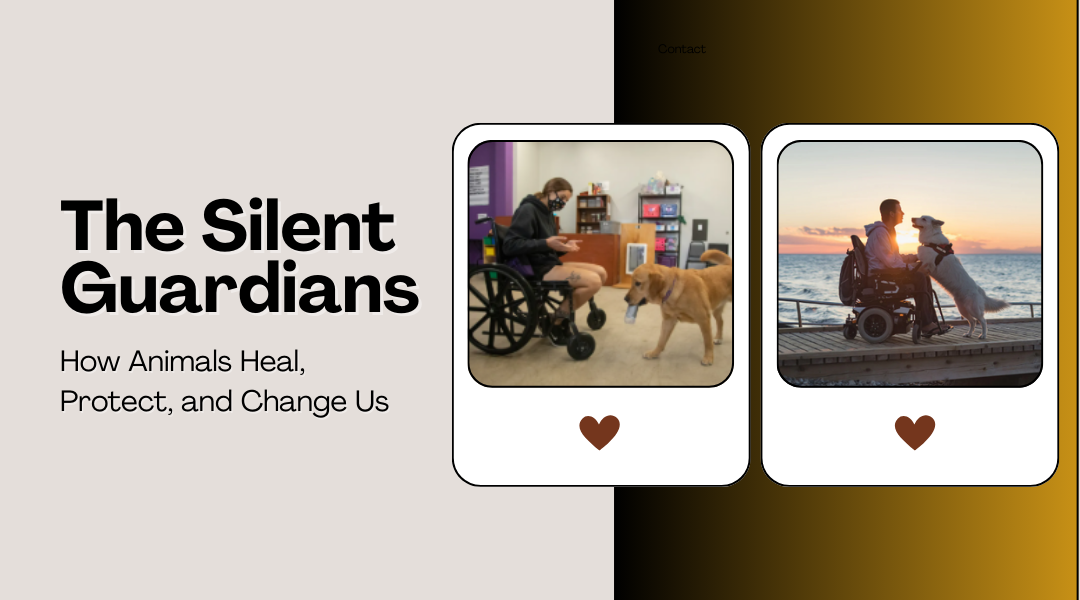When Paws Become Medicine
I’ll never forget the first time I saw a therapy horse break through to a kid who hadn’t spoken in months. The boy—rigid with trauma—finally exhaled when the mare nuzzled his palm. No words, no flashcards, just warm breath and trust. That’s the alchemy of therapy animals: they don’t do anything spectacular, and that’s precisely what makes them extraordinary.
Take hospitals in Sweden, where “visiting rabbits” hop onto patients’ beds during chemotherapy. Nurses report blood pressure dropping faster than with sedatives. Or the rehab center in Brazil where parrots—yes, parrots—coax stroke survivors into relearning speech by demanding crackers with increasing sass. These aren’t trained behaviors; they’re interspecies moments of grace.
The Myth of “Just a Pet”
We’ve all seen guide dogs working—that elegant dance through crowded streets where the human’s hand and the dog’s harness become one nervous system. But what stunned me was watching a retired guide dog at a café. His owner, now blind from progressive disease, kept instinctively reaching for the harness… only to find empty air. The dog, years out of service, still pressed his flank against her knee every time a waiter passed. Some bonds outlast duty.
Then there are the unsung heroes:
- The beagle at a Florida nursing home who detects plummeting blood sugar by licking residents’ ankles before their monitors alert
- The former street cat in a Tokyo psych ward who headbutts panic attacks into submission
- The dairy cow in Wales adopted by a PTSD survivor, who says brushing her hide does more than therapy ever did
These animals aren’t following scripts. They’re reading the room with senses we lost millennia ago.
Disaster Whisperers: Canines Who Work in the Rubble
Search-and-rescue dogs live for two things: their red Kong toys and the moment debris shifts under their paws. I trailed a team in Mexico City after the 2017 quake, where a German shepherd named Tlalli found a teenager buried under a collapsed school. The kid survived because Tlalli ignored “scent cones” and physics—she clawed upward through unstable wreckage to a void no human searcher had considered.
“These dogs don’t just find people,” her handler told me, wiping dust from her eyes. “They find hope when we’ve run out.”
Noses That Outsmart Machines
While we build billion-dollar scanners, detection dogs are out there sniffing out:
- Early Parkinson’s from skin swabs (Scotland, 2022)
- Underground gas leaks three days before sensors catch it (Texas pipeline crews)
- Invasive ants in cargo holds by their pheromone trails (Australian ports)
Their secret? Unlike tech, dogs enjoy the work. Watch a Malinois “clear” a school for explosives—it’s basically a game of hide-and-seek where every win earns a tennis ball.
Barnyard Therapists
There’s a ranch in Montana where combat veterans muck stalls alongside scarred racehorses. No riding, no agendas—just two broken creatures leaning into each other’s warmth. “That horse knows shame better than my therapist,” a Marine told me, watching the Thoroughbred that once panicked at shadows now doze as he braided its mane.
Or the hens at a Brooklyn rehab center who teach addicts about consequences: forget to fill their water, and they’ll tell you about it. Simple lessons in accountability, delivered with feathers and indignation.
Why This Matters
We’re living through an age where we’ve never been more connected—and more isolated. These animals bridge that gap in ways no app can:
- A diabetic alert dog is a living, breathing alarm clock that cares if you wake up
- A therapy llama’s absurd eyelashes make terminal patients laugh for the first time in weeks
- A hearing dog doesn’t just alert to doorbells—it learns your spouse’s footsteps
They remind us that connection isn’t about language. It’s about presence.
Final Thought
Next time you see a service vest or a barn cat curled on a hospital bed, look closer. That’s not an animal doing a job. That’s a million years of evolution saying, “I’ve got you.” And frankly, we don’t deserve them.
